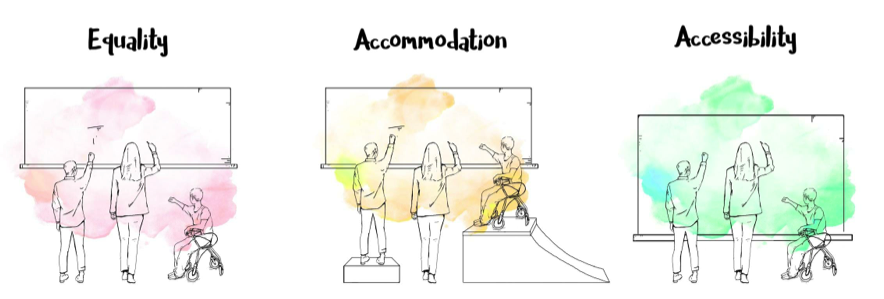Image belongs to Forward with FLEXibility Copyright © 2017 by McMaster University. All Rights Reserved.
Retrieved from https://flexforward.pressbooks.com/chapter/accessible-education/
What Accessibility Means to Us
Accessibility is
Intentional reduction in barriers within physical and institutional spaces and infrastructure.
For example: ramps, quiet hours for shopping/dimmed lights, etc.
Ensuring social and cultural spaces are easier to navigate by overcoming the ingrained barriers and ‘unspoken rules’ that may not come intuitively to all individuals.
For example: Giving neurodivergent individuals more time to respond and allowing for individual responses (fidgets, tics ,lack of eye contact) to be expressed without external or internal judgment on that individual – such as those responses equating to a lack of professionalism.
and, Especially regarding Invisible disabilities- including mental health and neurodivergence- the enthusiastic effort to
a) empower people to state their access needs
b) attentively listen to those needs
c) accommodate and address them.
Overall, it is allowing disabled folk to self determine their needs and support them in obtaining those needs AND taking proactive measures to improve equitable ease of access.
Sincerely,
SSD Staff & Council




